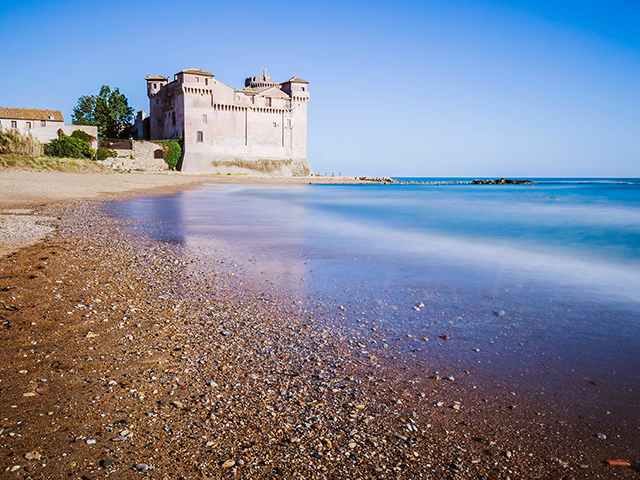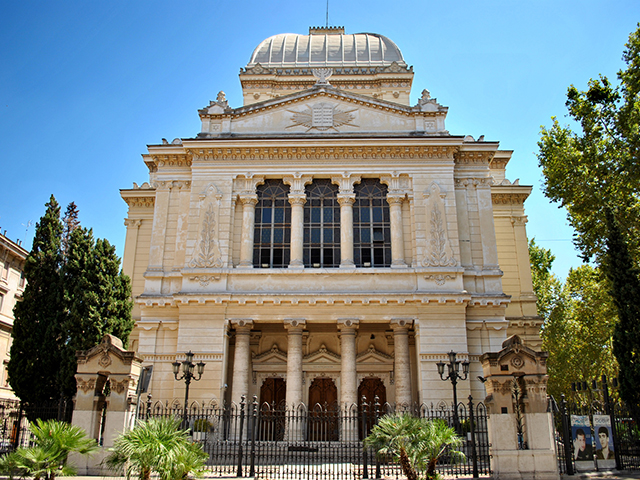A Day Ashore at Civitavecchia by Mary Jane Cryan
Here's a short extract of "Etruria - Travel, History and Itineraries in Central Italy" by Mary Jane Cryan, writer and historian of Irish originA Day Ashore at Civitavecchia
"Many of the thousands of cruisers who disembark at Civitavecchia for the day have a secret wish.
As they eat an abundant breakfast in air conditioned dining rooms they review the possible day trips which range from an expensive escorted bus ride into Rome to more economic do-it-yourself excursions using the local trains for a quick view of the Eternal City.
It has been estimated that 25% of the cruisers arriving in Civitavecchia do not go into Rome, an hour away, since they have already been to the Eternal City and prefer to explore the area around the port of Civitavecchia.
The options are enormous: from horseback riding in the Tolfa mountains to a cooking class and lunch in a private home. Some wish to catch a personal glimpse of Italian life, to explore the area around the port and its hinterland or just to wander around Civitavecchia watching how people live in this little-known corner of Italy.
As a local resident who has lived in this central part of Italy for almost half a century, I would recommend the Etruscan Triangle itinerary as an ideal introduction to the area. The itinerary includes the nearby towns of Tarquinia, Tuscania, Viterbo, Vetralla and, time and weather permitting, a visit to Vulci.
To maximize a day in Civitavecchia, leave the port area with the free shuttle bus to the port entrance [...].

Writer Mary Jane Cryan
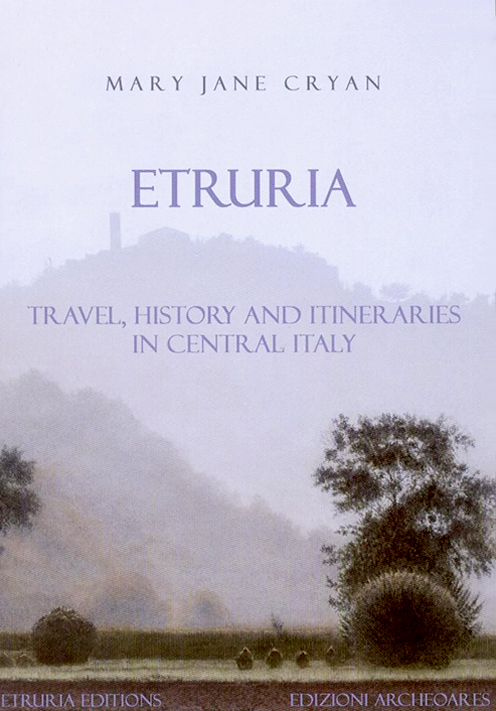
Etruria - Travel, History and Itineraries in Central Italy
From here visitors can pick up a rental car, a taxi or one of the many local drivers booked ahead of time by email. There are several trustworthy English speaking drivers living in the area who are licensed to do day trips [...].
Rental cars -perhaps the most convenient and inexpensive way to visit the area for four people sharing a car- can be booked on line, but be sure precise directions are supplied, as the pick-up office, although close to the port, is not easy to find. If a group needs an official local guide there are several who live in the Viterbo-Civitavecchia area who are available by prior arrangement.
Check the timetables carefully on www.cotralspa.it to organize a trip to one of the nearby towns for just a few euro. Always remember to find out exactly where and when the bus will return to the same spot and always double the amount of time it takes to go out, to arrive back to the dock.
Tarquinia, an important World Heritage Site is the first stop on the Etruscan Triangle Itinerary.
Located about 20 minutes from Civitavecchia port, this stunning walled medieval hill town is spiked with towers not unlike the famous “Manhattan of the Middle Ages”, San Gimignano in Tuscany. It is also unique for it was an important Etruscan site as the many 6-8th centuries B.C. painted tombs in its necropolis testify.
In the center of town, near the Barriera San Giusto bus depot and parking lot the magnificent 16th century Palazzo Vitelleschi houses the National Etruscan Museum.
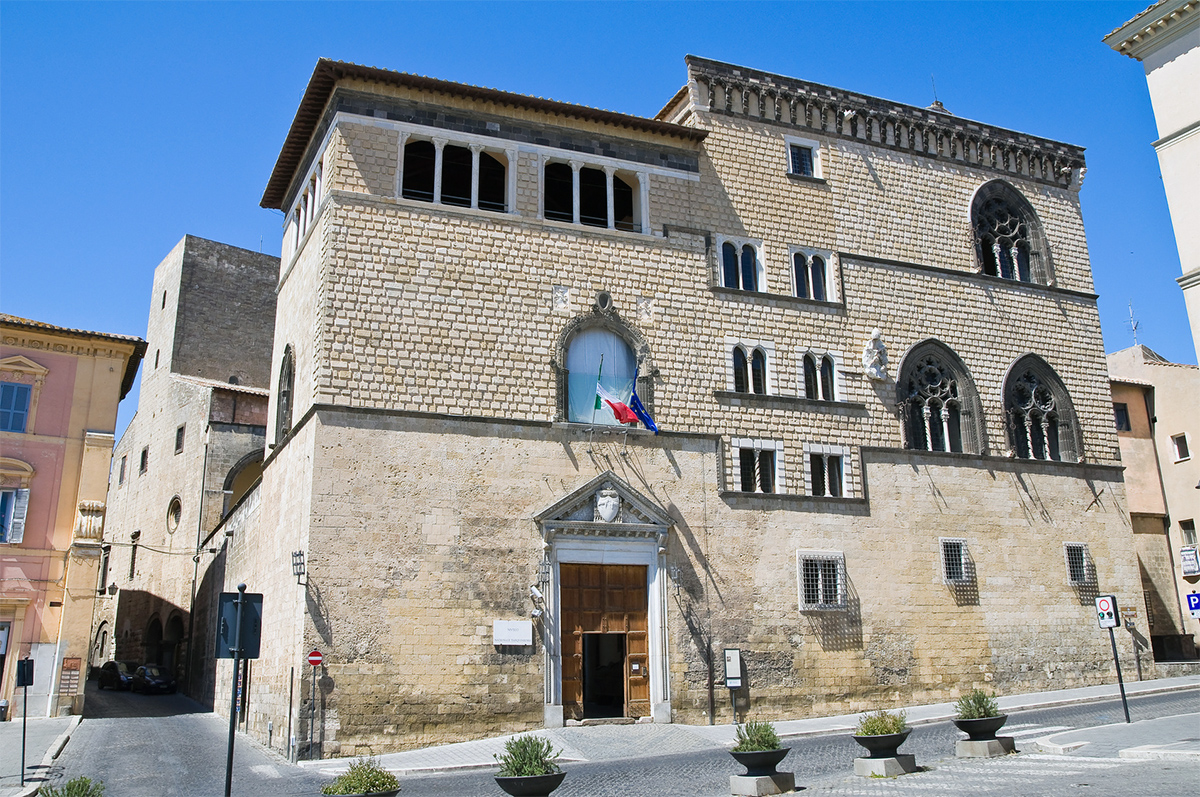
Etruscan Museum of Tarquinia
Its three floors of vases, sarcophagi, and gold jewellery will captivate the first time visitor who should try to keep some time to also explore Tarquinia’s narrow streets, lovely piazzas full of shops and medieval buildings. A walk to the top of the town and along the walls to S. Maria in Castello will reward the visitor with magnificent views over the surrounding countryside. Fast food in Tarquinia means a stop for gelato or slice of pizza in the main piazza. [...]
Tuscania, 15 kms. further inland is famous for its lovely historic center which has been perfectly restored after the destruction by an earthquake in 1971. D.H. Lawrence claimed that the views from the hillside of Tuscania over the Marta Valley were the most beautiful in all of Italy.
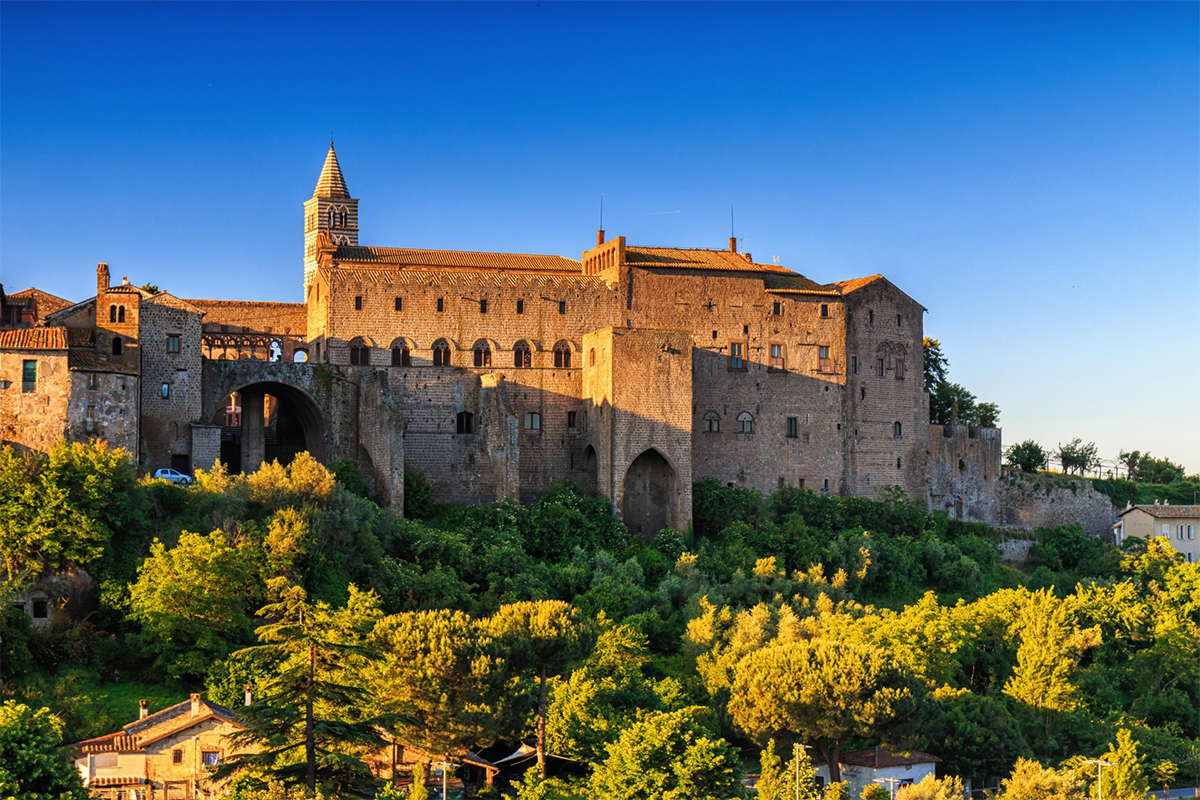
Viterbo - Papal Palace
Vetralla con le sue spettacolari connessioni inglesi è la terza tappa del triangolo in questo itinerario, che si trova a 20 chilometri percorrendo una strada panoramica, mentre Viterbo, capoluogo di provincia vanta il rione medievale meglio conservato d'Europa. San Pellegrino e il Palazzo Papale dove si celebrava il Conclave originale nel XIII secolo sono solo alcune delle attrazioni di Viterbo. Per gli amanti della storia c’è anche un magnifico sito Romano seguendo la costa verso nord: Vulci, con resti di strade, bagni, una riserva naturale, un ponte ad arco e un suggestivo panorama.
Civitavecchia itself, being a seaport, has had more than most city’s share of pirate invasions, looting and pillage. During Roman times it was known as Centumcellum and during the eighth century AD the raids by Saracen pirates on the port became so bad that Pope Leo III had a new town built on the nearby hills and transferred the citizens of Centumcellum there.
The new city was named Leopolis, in his honor and it was complete with a church, seat of a bishop, workshops, market square and lookout towers along the circumference of encircling city walls. The populace rarely used the name Leopolis preferring a medieval corruption of the name of their former hometown, and called their new town Cencelle.
Today the ancient site of the once flourishing medieval town, the “grandfather “ of Civitavecchia, is a stark contrast with the bustling modern port and its great cruise ships. Standing in silence admiring the magnificent views from the ramparts of the abandoned city of Cencelle, gives one a deeper understanding of the history of mankind and the passage of time.

Ancient Ruins of Leopoli - Cencelle
Cencelle has often been called “the Pompeii of the Middle Ages” for the site is a veritable time capsule and a textbook used by students of medieval archaeology who can study first hand the architecture and artefacts of the early middle ages.
By the beginning of the 15th century Leopolis-Cencelle was abandoned when its economy failed and the inhabitants were forced to move. Most of them returned to their original city, which they called Civic Vetula or old town, today’s Civitavecchia.
Nowadays the hilltop ruins are a place for the archaeologist, time traveller or romantic visitor looking for a special picnic spot.
From the stretches of the old city walls and towers overlooking the Mignone river one can see Tarquinia’s towers to the north, the hills of Tolfa looming to the south and east beyond meadows and fields of bright green dotted with irises, poppies and the white scar that signals the ancient alum mines at the town of Allumiere. Alum was a precious mineral used in textile and paint manufacturing, a monopoly of the Popes and worth more than its weight in gold.
by Mary Jane Cryan
From "Etruria - Travel, History and Itineraries in Central Italy" (Edizioni Archeoares).
To buy the book click here.



 PORT MOBILITY CIVITAVECCHIA
PORT MOBILITY CIVITAVECCHIA










